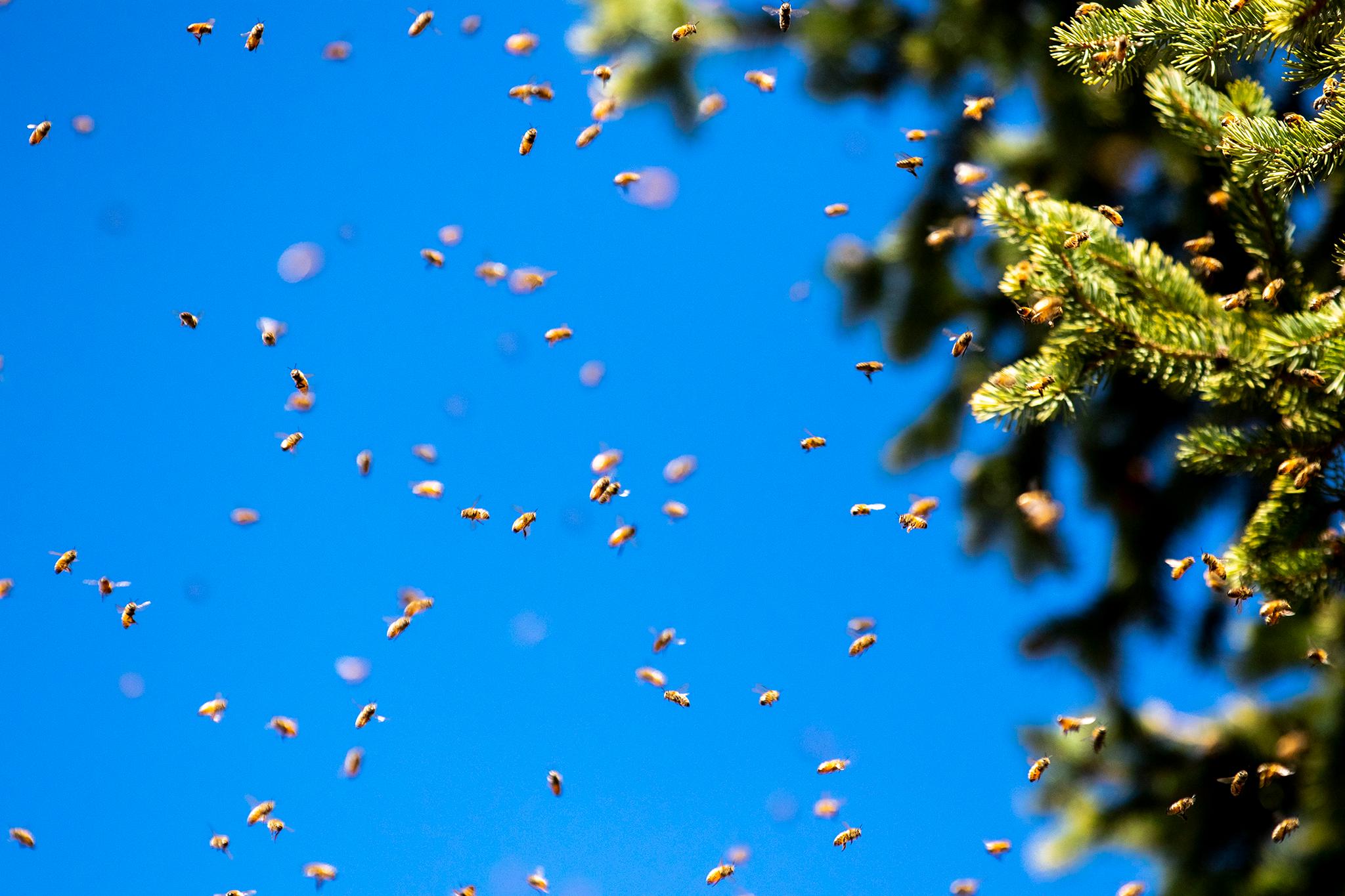
This summer, wildflowers brought an unusually bright splash of color to Colorado’s hillsides. Although the blooms were largely the product of a slow-melting snowpack and a wet spring, native pollinators like bees and butterflies played a critical role in creating these colorful habitats. But a new study shows that these flying insects are in trouble.
In recent years, scientists have found that many animals have migrated to higher elevations to seek cooler environments in response to rising temperatures. For many species, this strategy works. For flying insects, however, this escape route can have insurmountable challenges.
Researchers at the University of Colorado Denver and the Georgia Institute of Technology analyzed data on 800 species of insects around the world and discovered that flying insects — many of which play a crucial role in pollinating the world’s plants and crops — are migrating at slower rates than their non-flying counterparts and appear to be dying at faster rates. That includes many insect species located in Colorado, said Michael Moore, a CU Denver assistant professor of integrated biology who led the study, which was published in Nature Climate Change.
“One of the problems is that high-elevation environments aren't just colder,” he said. “These environments also have a lot of other things that are unusual about them, including the fact that they have a lot less oxygen for the organisms that try to live there.”
Flying insects also have a harder time contending with more intense ultraviolet radiation from the sun and stronger winds at higher elevations. Moore said understanding whether flying insects can overcome all of the demands will be key to determining their chances of survival at higher elevations as they respond to climate change.
Moore said the research team chose to focus their study on insect migration patterns since flying insects require some of the highest amounts of oxygen of any animal.
“Species like the American bumblebee and the Central bumblebee, these are species that are native here to Colorado and they're having a really hard time moving up high into the mountains,” Moore said.
Losing pollinator species not only hurts Colorado’s biodiversity, but flying insects play a critical role in our food systems. “Our agricultural systems might be in a lot of trouble,” Moore said.
Despite the grim outlook, Moore is hopeful. The team’s research is based primarily on data in BioShifts, a global database built by other researchers on how plants and animals are moving in response to climate change.
Citizen science also played a key role in the research team’s ability to calculate insect migration rates. The researchers used data collected by citizen science applications like iNaturalist and eBird, which enable the public to contribute to real-world biodiversity research by uploading pictures of plants and animals. This data gives scientists like Moore the ability to analyze public observations in real time and estimate where species are currently living.
“Another big thing that we really need to prioritize is making sure that there are connected habitat patches from low elevations to high elevations,” Moore said.
These connected habitat patches, or wildlife corridors, allow species to more easily migrate to different habitats despite their habitats being disconnected by cities or farmland.
The creation of these corridors — which could be as simple as growing native trees or shrubs and planting a diverse set of flowering plants in your yard — can allow flying insects to adjust more gradually as they migrate to higher-elevation environments rather than having to adjust all at once, giving them a better chance of surviving.
“Insects are under a lot of threats besides just climate change,” Moore said. “So making sure that we're making sure that we are using best practices is really key in terms of thinking about reducing the amount of pesticides and herbicides that we're using. We should make our yards as usable for species like bees and butterflies as they are for our kids.”









